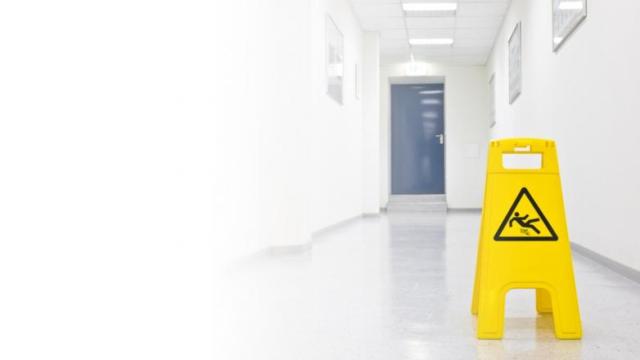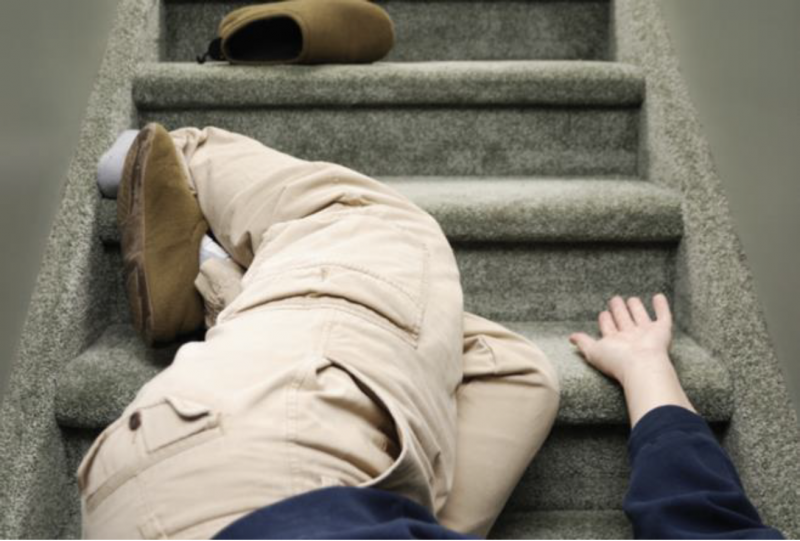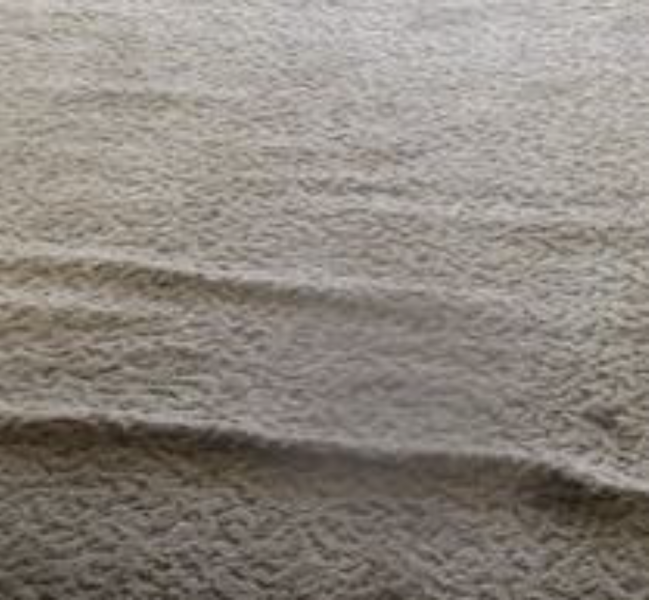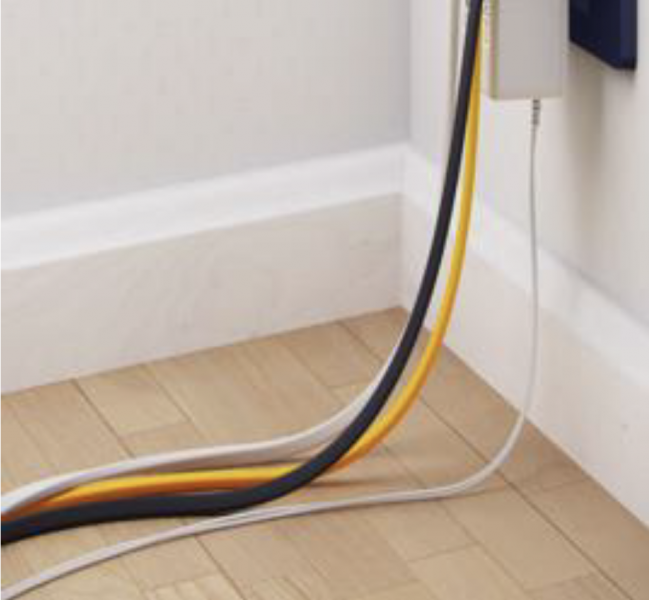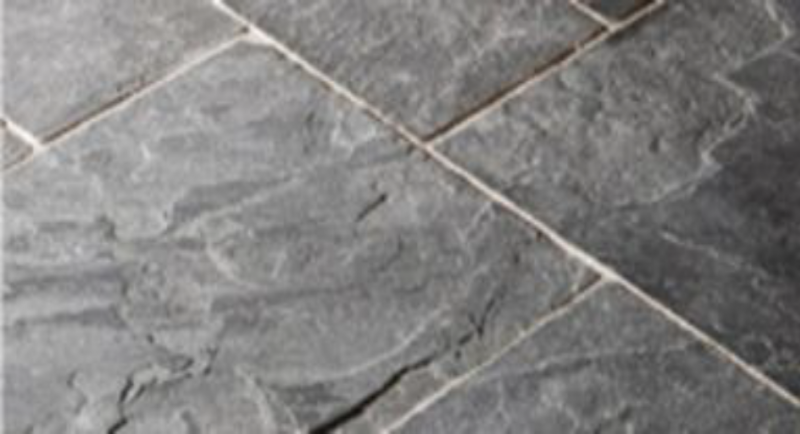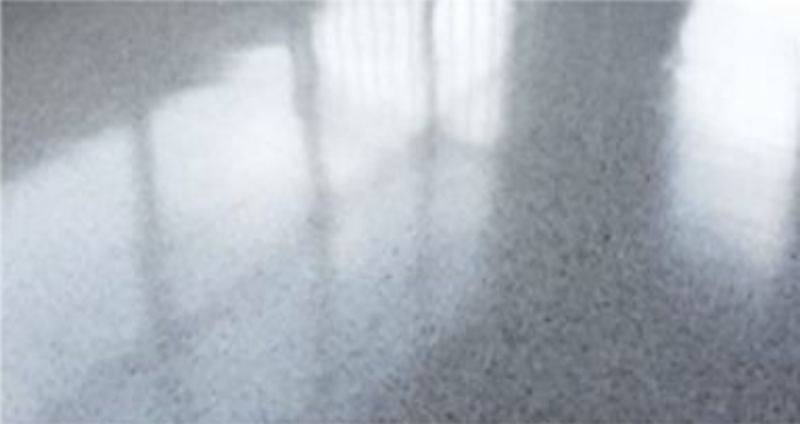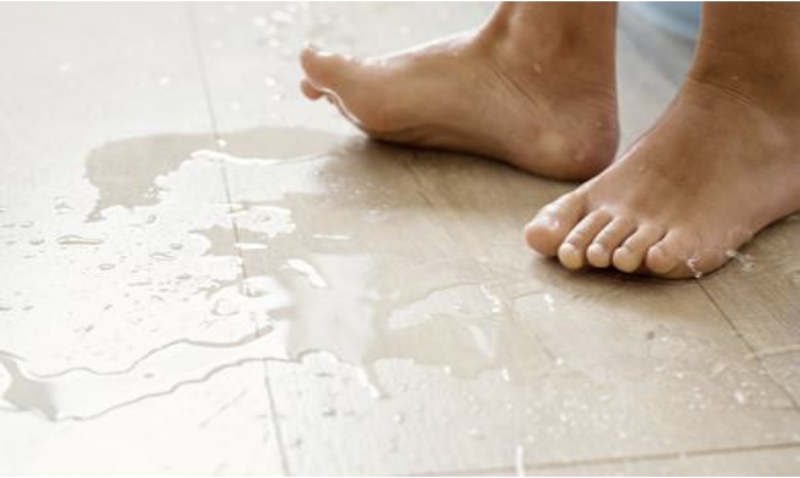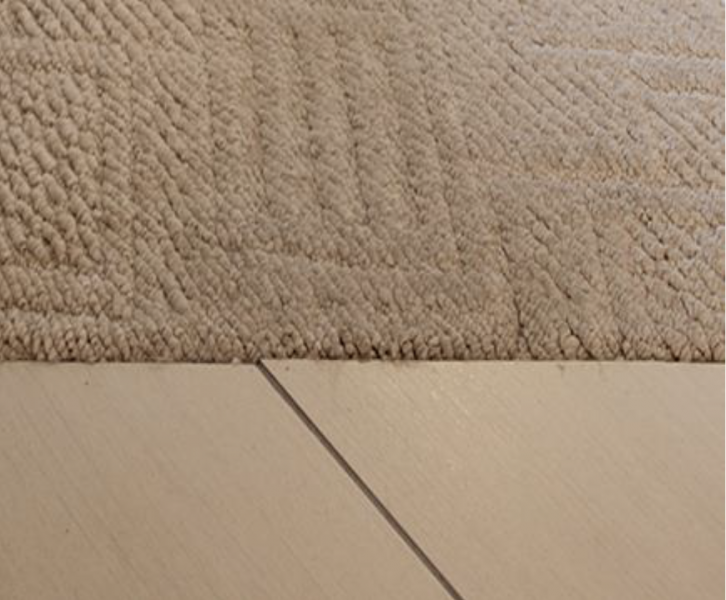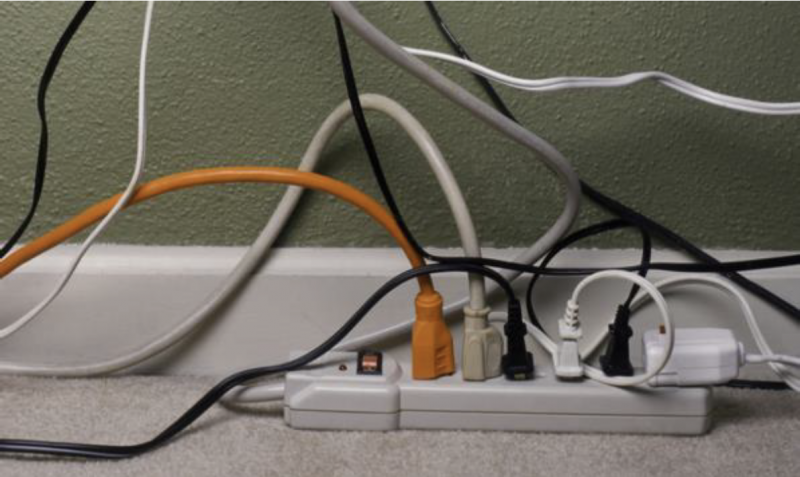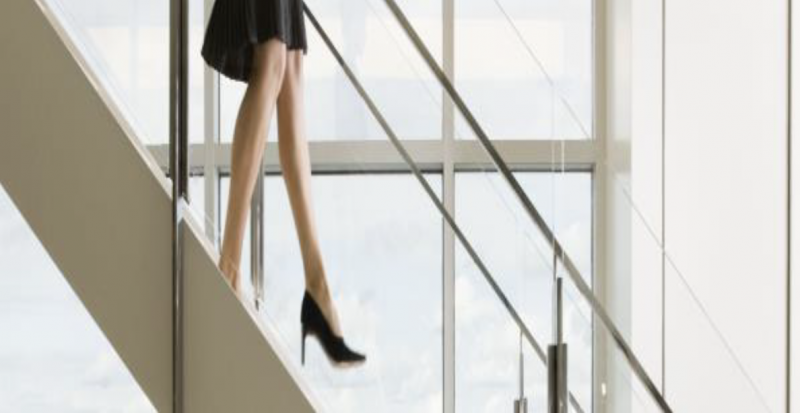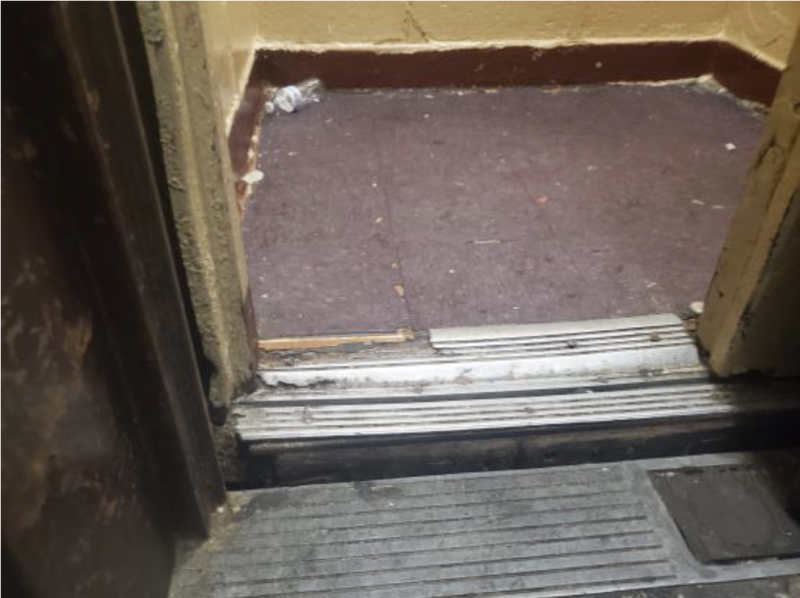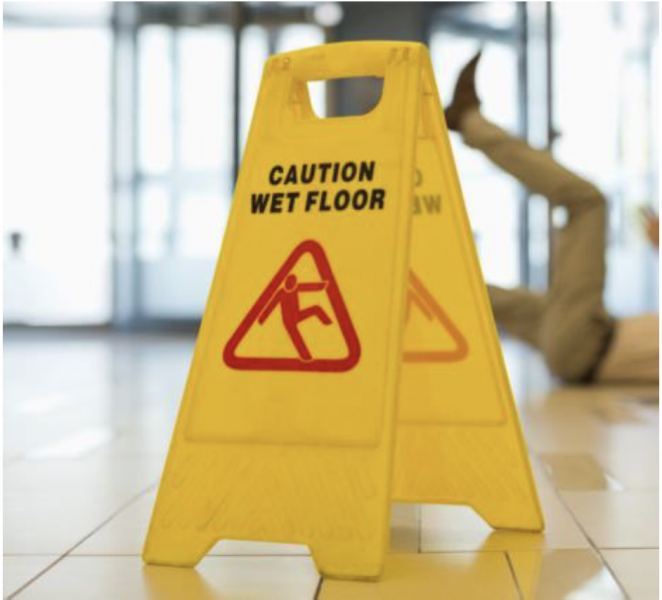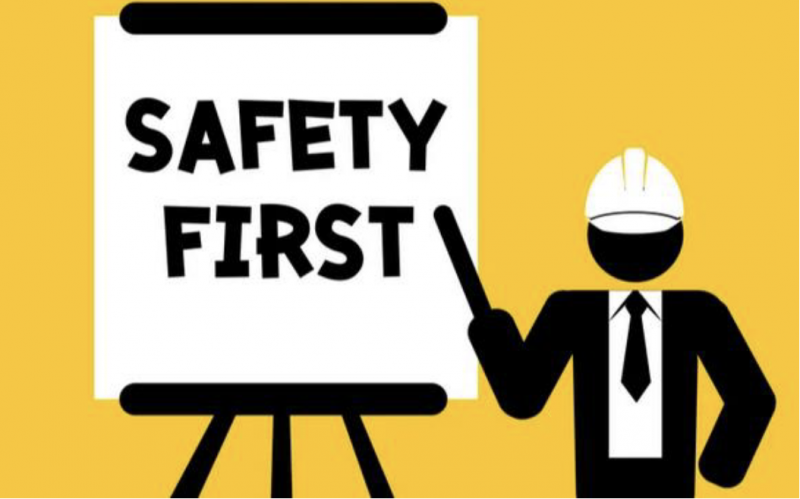Interior Slip, Trip, and Fall Prevention Inspection Checklist
CLICK HERE TO REFER TO THE CHECKLIST
Slips, trips, and falls are occupational hazards found in nearly every type of residential or commercial setting. Preventing them involves a combination of management approaches, hazard identification, and correction and personal responsibility.
Interior Slips, Trips and Falls: Claim Frequency and Severity
In the United States, more than 8.7 million people are hurt from slip, trip, and fall incidents every year. Most common are joint injuries, typically to the wrist, elbow, shoulder, knee, and back.
Slips
Slips result from inadequate friction or traction between footwear and floor surfaces.
Contributing reasons for slips:
- Wet or dry contamination on the floor
- Loose, unsecured rugs and mats
- Walking surfaces with different degrees of traction
Trips
A trip occurs when the foot strikes an object, resulting in a loss of balance
Common causes for trips:
- Cords or clutter in walkways
- Obstructed views
- Uneven stairs
Falls
Falls occur while walking from low or high elevations. The severity of injuries from falls is increased by the height and the surface. 67% of slips and trips end in falls.
Fall incidents usually involve the following:
- Slippery, cluttered, or unstable walking or working surfaces
- Unprotected edges
- Floor holes and wall openings
- Unsafely positioned ladders
- Misused fall protection
Checklist: 10 Risk Factors
The potential for incidents often depends on the convergence of 10 risk factors. For accurate assessment of the probability of slips, trips, and falls, each factor has to be evaluated on a scale from "high potential" to "very low potential."
1 | Surface Composition
Surface composition is the type of floor and the friction or slip resistance of the surface provides. Floor surfaces should have sufficient "grip" to prevent slipping, especially in areas that may become wet or contaminated. The greater the thickness or viscosity of the containments, the greater the slip resistance of the flooring needed to protect against slips.
Slip-resistant surfaces:
- Natural stone
- Asphalt
- Brick
- Broom-finished concrete
- CarpetSlippery when wet:
- Vinyl-composition tile
- Ceramic tile
- Terrazzo
- Marble
- Granite
2 | Foreign Substance Potential
Foreign substances may appear on the walking surface and impact slip resistance. The greater the potential for foreign substance introduction, the greater the potential for slip and fall incidents.Items to consider:
- Ice
- Water
- Liquids
- Powders
- Grease
3 | Surface Conditions
Observable surface deterioration should receive extra attention. Surfaces to inspect include painted surfaces, loose carpeting, loose or broken tiles, surface holes or pits and unusual wear.4 | Surface Changes
Surface changes from one type of material to another as someone walks through the area are common causes of slips and falls.
Critical cases:
- Carpet-to-tile
- Brick-to-epoxy floor
- Wet-to-dry5 | Level Changes
Level changes include floor walking surface height changes of three or fewer steps. Items to consider include non-uniform steps or stairs, high curbing and poor visibility, and illumination.6 | Obstructions
Obstructions protrude into the walking path, contributing to the likelihood of trips and falls.Things to avoid:
- Extension cords
- Hoses
- Product storage
- Parts of equipment
7 | Visibility
Poor lighting and distractions can impair a person noticing slip or trip hazards in their path. Adequate lighting without glare or shadowing are required to maximize visibility of potential slip or trip hazards. Other distractions should be minimized to the extent possible. Items to consider include glare, shadows, bright lights, and color contrasts.8 | Human Factors
Different individuals have different physical capabilities.
Special consideration should be given to:
- Individual physical attributes such as vision, balance, and agility
- The activity being carried out and how it is organized
- Who will be walking through the area, including the public9 | Stairs (including elevators and escalators)
Stairs are a major source of falls that result in serious injury. Most falls on stairs occur while descending.Considerations:
- Step geometry must be uniform to prevent users from misstepping and falling.
- Handrails should be uniform around stair corners and not present a situation in which the user has to search for the next section of railing.
- Handrails need to be secure and easily grasped.
- Stair treads should be slip-resistant, well maintained, and free of defects.
- Escalators and elevators, if any, need to be considered.
- Elevator thresholds should be level with the elevator carriage at each level and be slip-resistant.10 | Unusual Features
Unusual features include anything out of the ordinary that might distract a person walking through the area. Examples include alarms/buzzers, strobe/flashing lights, information boards, displays, large windows, and decorative lighting.
Housekeeping Practices
Excellent housekeeping practices are key to minimizing slip, trip, and fall injuries.
They include:
- Clear access ways
- Prompt spill cleanup
- Signage and/or barricades for wet or slippery areas
- Training and supervision
Training
All staff should be trained to identify slip, trip, and fall hazards and mitigate them or report them as appropriate.
Crucial Talking Points:
- Proper cleaning procedures
- Use of the handrails on stairs
- Safety considerations when using ladders
- Appropriate slip-resistant footwear for the job
- Spill response expectations and general housekeeping expectations
Consultation
Before changes are made to facilities and processes, or equipment is purchased, consult the workers in the work area about the changes. General awareness training can help employees recognize the impact of slip and fall injuries on individuals and businesses.
Possible Topics for Discussions:
- Safely stepping over obstacles
- Determining appropriate walking speed
- Preventing falls by improving health
Submitting a Slip, Trip, or Fall Claim to GNY
To submit a claim after a Slip, Trip, or Fall loss refer to the guides here.
The content herein is for informational purposes only without warranty of any kind, whether express, statutory, or implied, and the information contained herein does not constitute legal advice. You should contact an attorney to obtain advice with respect to any particular issue or problem. Greater New York Mutual Insurance Company and its affiliates assume no liability whatsoever for any errors or omissions in any content contained herein.
